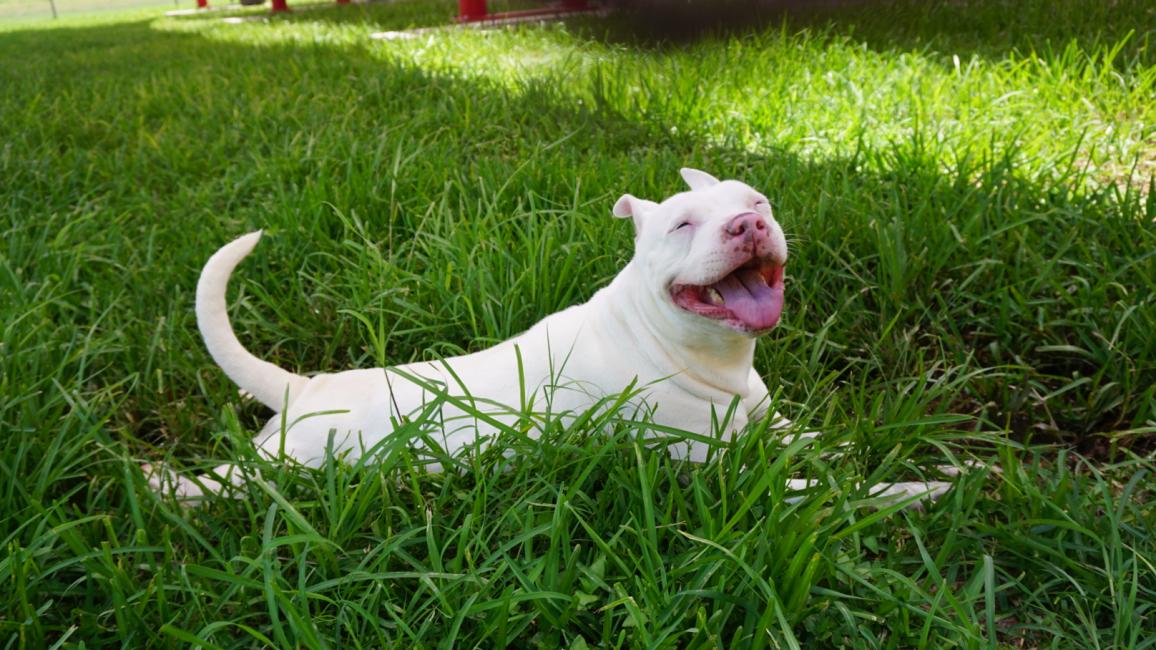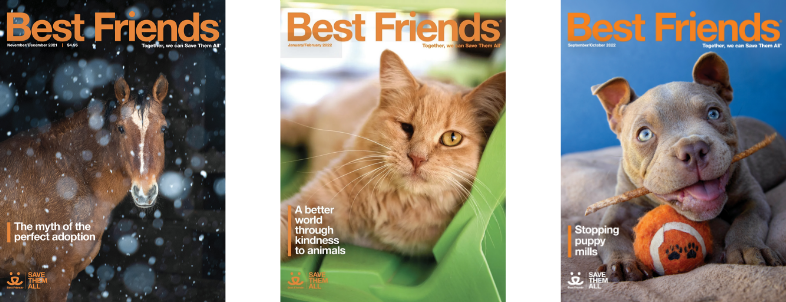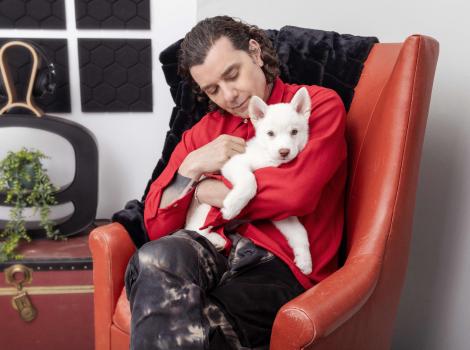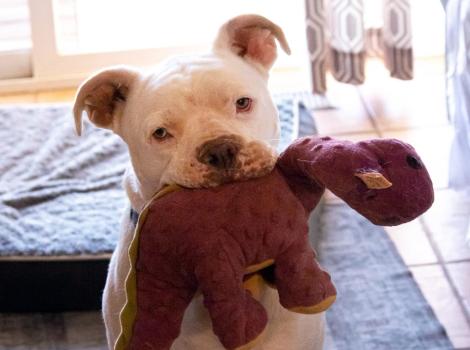Faces of No-Kill: Baby Girl in Brownsville, Texas

You can’t miss Baby Girl’s smile. She’s living her best life in her new home with her family, unaware that she could be a poster pup for no-kill. Baby Girl had heartworms when she landed at Brownsville Animal Regulation and Care Center in Texas. Common in the South, heartworm disease is life-threatening and requires treatment that can be expensive and takes several weeks or months to complete.
Historically, dogs who arrived at the Brownsville shelter and tested positive for heartworms were placed on the euthanasia list. Instead, the shelter began working with Best Friends as part of the national embed program, made possible in part by a grant from Maddie’s Fund®. It was just in time for Baby Girl to have a different outcome than she would have had in the past.
The Brownsville shelter had struggled with a save rate (the percentage of animals who enter a shelter and leave alive) of 23% the previous year. Then in May 2023, the shelter signed on to receive assistance from Best Friends through the embed program, and a Best Friends staff person arrived to work full time alongside the shelter leadership and staff. The goal was to assist them with implementing proven strategies to save lives and ultimately reach a save rate of at least 90%, the benchmark for no-kill.
[Q&A: Best Friends national shelter embed program]
To cut down on the spread of diseases, they started vaccinating animals as soon as they arrived at the shelter. They changed how they fed and housed pets, helping them to be less stressed during their shelter stay. They expanded the hours that the shelter is open to the public and made the process easier for people wishing to adopt. Each change made a difference, and they began to save more pets’ lives.
They were also able to start a heartworm treatment program to save the lives of animals who previously didn’t have much of a chance to leave the shelter alive. The first patient to graduate from the heartworm treatment program? Baby Girl. On second thought, maybe she knows exactly how lucky she is to be alive, and that’s why she so often wears an unforgettable smile.
This article was originally published in the January/February 2024 issue of Best Friends magazine. Want more good news? Become a member and get stories like this six times a year.
Let's make every shelter and every community no-kill by 2025
Our goal at Best Friends is to support all animal shelters in the U.S. in reaching no-kill by 2025. No-kill means saving every dog and cat in a shelter who can be saved, accounting for community safety and good quality of life for pets.
Shelter staff can’t do it alone. Saving animals in shelters is everyone’s responsibility, and it takes support and participation from the community. No-kill is possible when we work together thoughtfully, honestly, and collaboratively.







